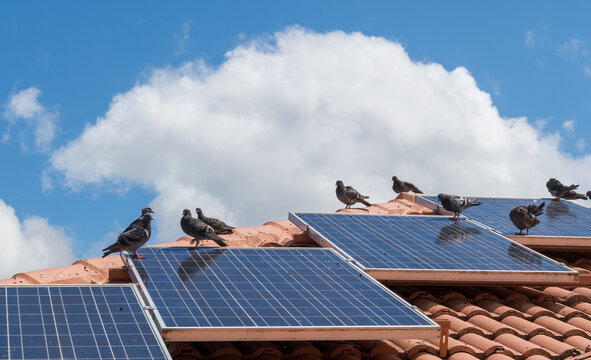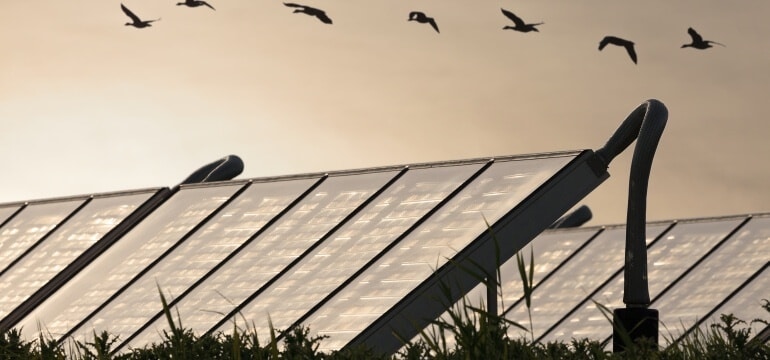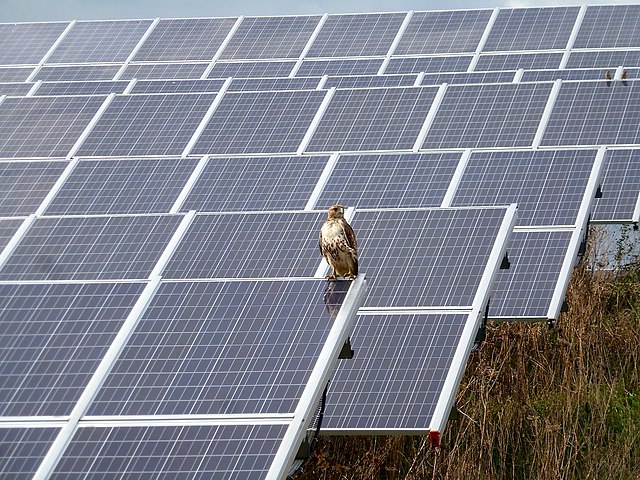
Introduction
Solar energy has emerged as a promising alternative to traditional fossil fuel-based energy sources. As the demand for clean and renewable energy grows, it is important to assess the potential environmental impact of solar installations. One of the key concerns associated with solar energy development is its impact on bird populations. This article aims to delve into the topic of bird mortality related to solar energy, highlighting its historical background, key concepts, and current trends. By exploring case studies, controversies, and future outlook, we can better understand the complexities of this issue and work towards sustainable solutions.
Historical Background
Solar energy development has been on the rise due to its numerous benefits, including reduced greenhouse gas emissions and energy independence. However, in the early stages of solar energy’s popularity, there was limited awareness about its potential impact on bird mortality. It was only through subsequent studies and incidents that attention was drawn to this issue. These early findings emphasized the need to address bird mortality as an essential aspect of solar energy development.
Key Concepts and Definitions
To understand the issue of bird mortality in relation to solar energy, it is crucial to define solar energy and bird mortality while introducing key terms such as avian collisions, thermal harm, and habitat loss. Solar energy refers to the harnessing of sunlight to generate electricity through various methods, including photovoltaic panels and solar thermal systems. Bird mortality encompasses the death of birds resulting from collisions with solar infrastructure, exposure to heat from concentrated solar power plants, and habitat disruption caused by solar installations.

Main Discussion Points
Avian Collisions with Solar Installations
Collisions between birds and solar panels or infrastructure are a significant concern. Several factors contribute to these collisions, including the reflective surfaces of solar panels that birds often mistake for open sky or water. The impact of bird collisions on bird populations and ecosystems cannot be ignored. These incidents can result in immediate fatalities or long-term injuries, disrupting the ecological balance. Efforts to mitigate bird collisions include design modifications that reduce reflectivity and the use of deterrents such as markings or ultrasonic devices.
Solar Energy’s Impact on Bird Habitat
Solar installations can also lead to habitat loss or fragmentation for birds. As land is converted for solar farms, it can disrupt existing ecosystems and displace bird populations. The consequences of habitat disruption can include loss of foraging grounds, nesting sites, and migration routes. Initiatives to minimize habitat disturbance include careful land use planning that considers the ecological needs of bird species and the restoration of alternative habitats.
Solar Energy’s Effect on Bird Behavior and Ecology
The presence of solar installations can alter bird behavior, migration patterns, and breeding habits. Birds may avoid areas with solar infrastructure, leading to changes in their distribution and habitat use. These behavioral changes can have long-term ecological consequences, affecting the overall dynamics of bird populations. Research studies examining bird responses to solar energy infrastructure are essential in understanding and mitigating these effects.

Case Studies or Examples
Real-world examples of bird mortality incidents related to solar energy projects highlight the urgency of addressing this issue. Specific locations or projects where bird mortality issues have been observed provide valuable insights into the challenges faced. These case studies also shed light on successful mitigation measures that have been implemented, such as modifying solar panel design or establishing protected areas for bird habitats.
Current Trends or Developments
Recent research findings have provided valuable information on bird mortality and solar energy, helping to refine our understanding of the issue. Technological advancements and innovations are continuously being explored to reduce bird mortality. These include the development of bird-friendly solar panels and advanced monitoring systems. Additionally, policies and regulations have been implemented to address bird mortality, ensuring that solar energy expansion is carried out with minimal impact on bird populations.
Challenges or Controversies
The extent of the bird mortality issue and differing viewpoints surrounding it have led to controversies. Accurately assessing bird mortality rates can be challenging due to various factors, such as underreporting or difficulties in determining the cause of death. Controversies also arise from the trade-off between renewable energy goals and bird conservation efforts. Balancing the need for clean energy with the protection of bird populations presents a complex challenge that requires collaboration and thoughtful decision-making.

Future Outlook
The expansion of solar energy presents both opportunities and challenges for bird populations. Speculating on the future implications, it is crucial to prioritize strategies for minimizing bird mortality. This includes the implementation of bird-friendly design practices, the establishment of protected areas, and the adoption of innovative technologies. Continued research and collaboration between the solar energy and conservation communities are essential to ensure a sustainable future where renewable energy and bird populations can coexist harmoniously.
Conclusion
In conclusion, addressing bird mortality in the context of solar energy development is of utmost significance. The potential impact on bird populations cannot be ignored, and efforts must be made to mitigate this impact through design modifications, habitat restoration, and sustainable land use planning. Continued dialogue and collaboration between the solar energy and conservation communities are critical to finding solutions that meet both renewable energy goals and bird conservation objectives.




